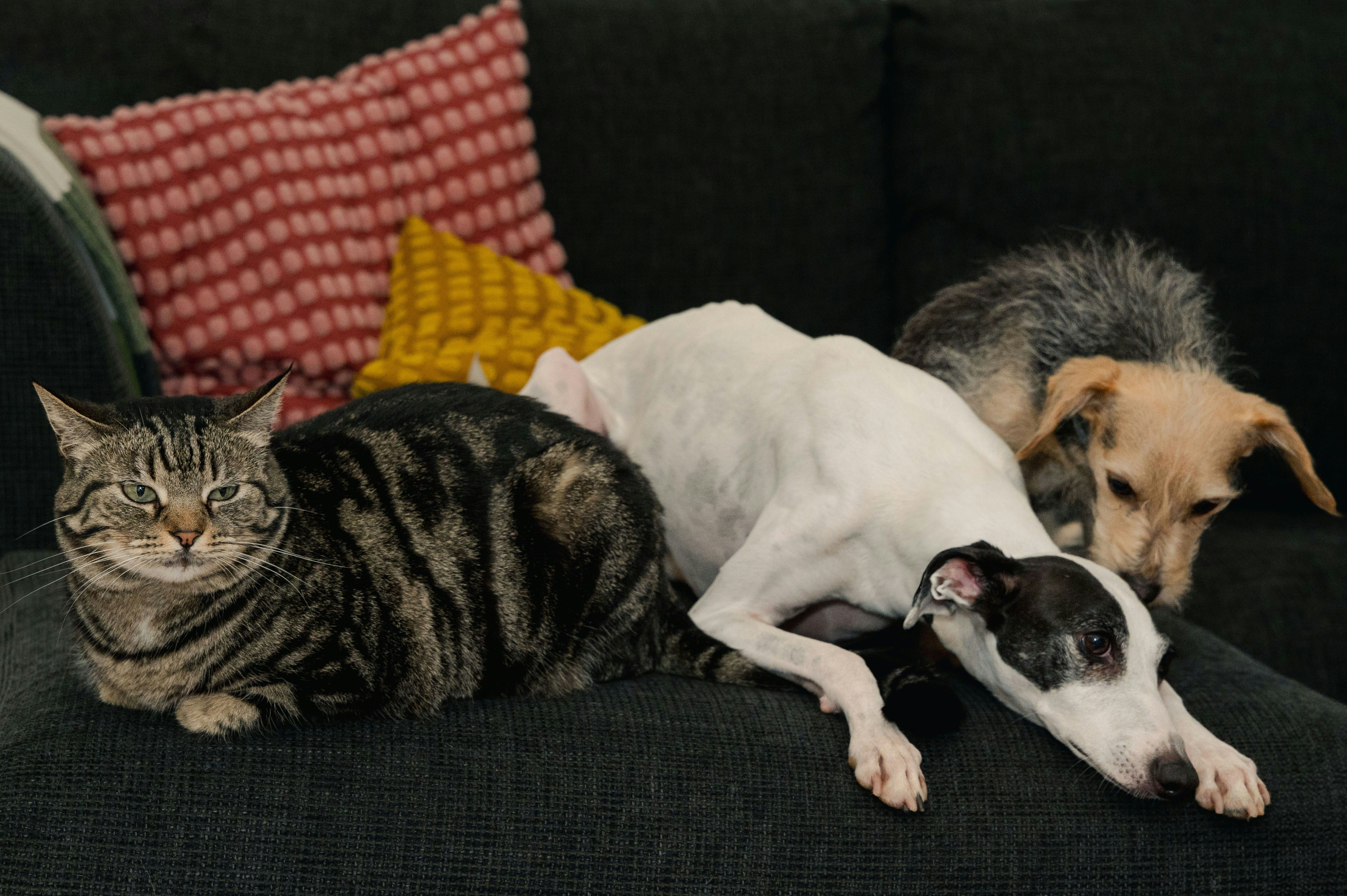Living with a pet in the Costa Blanca is a dream for nine months of the year. The mild winters are perfect for exploring coastal trails, and the sunny spring days are ideal for relaxing in the garden. Sharing this beautiful part of Spain with our dogs and cats is a true joy.
But the summer is a different story. As the July and August sun intensifies, our role as pet owners shifts from companion to protector. The heat is not just uncomfortable; it's a serious danger to our beloved animals.
This is your complete guide to summer pet safety in the Costa Blanca for 2025. We’ll cover everything from daily heat protection strategies and recognizing the signs of dog heatstroke to providing curated lists of trusted, English-speaking vets and licensed pet hotels from Dénia to Alicante.
Why is the Costa Blanca Summer Dangerous for Pets?
Understanding the why is the first step to effective protection. Animals, especially dogs, don't sweat like humans. They cool down primarily by panting. In the high humidity and soaring temperatures of a Spanish summer, panting becomes inefficient, and their body temperature can skyrocket. This leads to a life-threatening condition called hyperthermia, or heatstroke.
Key Summer Dangers for Your Pet:
- Heatstroke: An emergency condition where the body overheats. It can cause irreversible organ damage and can be fatal within minutes.
- Dehydration: Pets lose vast amounts of water through panting. Without constant replenishment, this can lead to serious kidney and organ issues.
- Burnt Paw Pads: Pavement, asphalt, and beach sand can reach incredibly high temperatures, easily causing painful, severe burns on your pet's paws.
- Sunburn: Light-coloured and thin-furred pets are susceptible to sunburn, especially on their ears, nose, and belly.
Which Dog Breeds Are Most at Risk in Hot Weather?
While all pets need care, some breeds are at a significantly higher risk in the heat:
- Brachycephalic (Flat-Faced) Breeds: French Bulldogs, Pugs, Shih Tzus, and Boxers have compromised airways and cannot cool themselves effectively. They require extreme care.
- Giant & Thick-Coated Breeds: Bernese Mountain Dogs, St. Bernards, Huskies, and Malamutes are genetically built for cold, not Mediterranean heat.
- Other High-Risk Pets: Elderly, overweight pets, or those with existing heart or respiratory conditions are also highly vulnerable.
10 Essential Rules for Summer Pet Safety in Spain
Adapting your daily routine is the single most effective way to keep your pet safe.
1. Master the Spanish Dog Walking Schedule (The 'Paseo')
Dog walks must be restricted to the coolest hours.
- Early Morning (before 9 AM): Your main walk. The air and ground are at their coolest.
- Late Evening (after 9 PM): The second main walk, once the pavement has had a chance to cool down after sunset.
- Midday Breaks: These should be for toilet purposes only, lasting just a few minutes on a shaded, grassy spot.
This is a non-negotiable rule. Place the back of your hand on the pavement. If you can't hold it there for five seconds, it's too hot for your dog's paws.
[Image suggestion: A person's hand touching a sunny pavement next to a dog's paw.]
Alt Text: The 5-second pavement test to check if the ground is too hot for a dog's paws in the Costa Blanca.
3. How to Keep Your Pet Hydrated
- Always provide multiple bowls of fresh, cool water.
- Carry a portable water bottle for your pet on all outings.
- Add ice cubes to their water bowl or make frozen treats from low-salt broth.
- Add a splash of water to their dry food to increase their intake.
4. Create a Cool Sanctuary at Home
Your home must be a safe haven.
- Utilize cool tile floors.
- Invest in a cooling mat, widely available at pet stores like Kiwoko or online.
- Use your persianas (blinds) to block out the midday sun.
- Use air conditioning or fans safely.
5. Never Shave a Double-Coated Dog
Breeds like German Shepherds, Retrievers, and Huskies have a double coat that acts as insulation from the heat. Shaving them removes this natural protection. A thorough brushing to remove loose undercoat is what's needed.
6. Car Safety: The Golden Rule
Never, ever leave your pet alone in a car. Not for a minute. Not with the windows cracked. In the Spanish sun, the temperature inside a car can become lethal in less than 10 minutes.
7. How to Recognize Dog Heatstroke Symptoms
Knowing the signs of heatstroke can save your pet's life. Act immediately if you see:
- Frantic, heavy panting or gasping
- Thick, sticky saliva and drooling
- Bright red gums
- Lethargy, dizziness, or stumbling
- Vomiting or diarrhoea
- Collapse or seizure
8. What to Do in a Heatstroke Emergency
- Immediately move your pet to a cool, shaded area or into air conditioning.
- Apply cool (not ice-cold) water to their body, focusing on their paws, belly, and neck. Use wet towels.
- Place them in front of a fan.
- CALL YOUR VET IMMEDIATELY. Inform them you have a heatstroke emergency and are on your way. Veterinary attention is essential.
9. Beach & Pool Safety for Dogs
Look for official dog-friendly beaches (playas caninas). Always provide fresh water and shade. After a swim, rinse the salt or chlorine from their coat to prevent skin irritation.
10. Be Aware of Other Summer Dangers
The summer also brings out processionary caterpillars (a danger in late spring/early summer) and snakes. Be aware of your surroundings on walks, especially in rural or undeveloped areas.
Finding a Vet in the Costa Blanca: Your English-Speaking Guide
The standard of care is excellent, and many clinics cater specifically to the expat community.
What to Look For in a Vet:
- 24-Hour Emergency Service (Urgencias 24h): Save the number of your nearest 24/7 vet in your phone.
- English-Speaking Staff: Most clinics in areas like Jávea, Moraira, Calpe, and Albir are multilingual.
- Recommendations: Ask for recommendations in local Facebook groups. Word-of-mouth is powerful.
Example Vets in the Jávea & Moraira Area:
- Clinica Veterinaria Victoria (Jávea): Highly respected with a 24-hour emergency line.
- Anicura Marina Baixa Hospital Veterinario (Alfaz del Pi): A large, 24/7 hospital serving the wider area.
- Exopet Clinica Veterinaria (Jávea): Another popular and trusted local choice.
Choosing a Pet Hotel or Kennel in the Costa Blanca
When you travel, you need a safe place for your pet.
What Makes a Good Pet Hotel (Residencia Canina):
- Official Nucleo Zoologico License: This is the most important factor. It's a legal registration proving they are inspected and meet welfare standards. Do not use an unlicensed kennel.
- Air-Conditioned Kennels: This is non-negotiable for a summer stay.
- Cleanliness & Safety: The facility must be clean and have secure fencing.
- Qualified Staff: The team should be experienced and caring.
- Strict Vaccination Policy: This shows they are professional and protects all the animals in their care.
Example Kennels in the Area:
- Blancos Pet Hotel (near Gata de Gorgos): A well-known and highly-rated facility.
- Candor Boarding Kennels (Llíber): Long-established with an excellent reputation.
FAQ: Costa Blanca Pet Safety
Q: What temperature is too hot to walk a dog on pavement in Spain?
A: If the ambient temperature is 25°C (77°F), the asphalt can be over 50°C (125°F). Use the 5-second back-of-hand test; if it's too hot for your hand, it's too hot for their paws.
Q: Are there many dog-friendly beaches on the Costa Blanca?
A: Yes, the number is growing. Key examples include Cala El Xarco (Villajoyosa), Playa de Agua Amarga (Alicante), and Escollera Norte (Dénia). Always check local rules as they can change.
Q: How can I find a 24-hour emergency vet near me?
A: Search Google for "urgencias veterinarias 24 horas" plus your town name. Prepare this information before you have an emergency.
Living with your pet in the Costa Blanca is a wonderful experience. By respecting the summer heat and taking these protective measures, you can ensure your best friend stays safe, healthy, and happy all year round.




